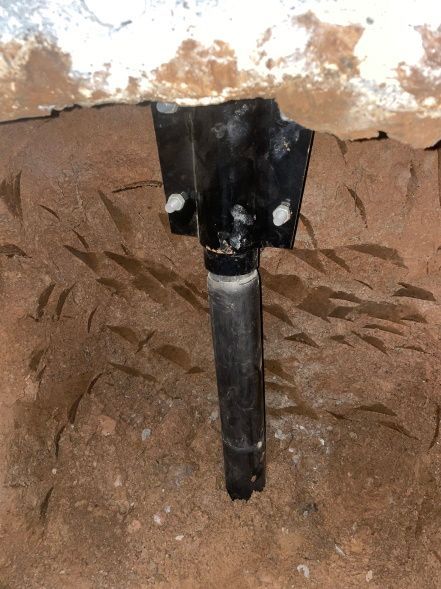3 Ways to Protect Your Kansas City Home's Foundation This Winter
Your Foundation Doesn't Mix Well With Winter

As snowy weather approaches, it brings a new and different set of challenges for Kansas City homeowners. The frigid temperatures of the winter season deeply penetrate the ground and affect the stability of home foundations.
For this, it is expected to face soil shrinkage, cracks from freezing thaw cycles, or foundation stress from the excess snow pressure on the roof. Amidst these never-ending challenges, a question arises: How can you protect your Kansas City home foundation this winter?
There are many options available, but you need to choose some effective ones, like cleaning gutters, balancing soil saturation, or repairing the cracks or damages in your foundation. Keep on reading to learn about each of the steps in detail.
3 Ways to Protect Your Kansas City Home's Foundation This Winter
1. Check Your Gutters and Downspouts
Water is the first factor to damage your home foundation, so you need to ensure that there is no standing water. For instance, your home gutter and drainage system are the first suspect factors to check. If the water doesn't drain properly, water from snowmelt and rain collects around your home. This creates extra pressure on your home's foundation and can cause damage over time. To protect your home foundation from this issue:
i) Clean Gutters and Downspouts
First, you need to make sure that your gutters and downspouts are clear of clogs like leaves and debris. Your gutters should be fully connected and draining freely. Check out the discharge portion of the downspouts and sump pump. It should be cleaned and at least 10 feet away from your home.
ii) Install French Drains
French drains are simple drainage systems that redirect water from your building and protect your foundation. You can expect to pay about $10 to $50 per linear foot for your exterior French drain, which goes up to $100 per linear foot for your interior French drain.
iii) Extend Downspouts
For those with short downspouts, foundation specialists suggest extending them to direct water further away from the foundation. For instance, adding extra pipes can be a good solution, keeping the foundation dry and safe.
iii) Shovel Snow Away
After heavy snowfalls, make sure you have cleared out the snow away from your house using a shovel. If you leave it unchecked, the foundation can pool away after melting.
2. Balance Your Soil Saturation
The soil in Kansas City, and most areas, is expansive clay, which is known as shrink-swell soil. Expansive clay soil tends to act like a sponge. When it gets wet, it expands and can't hold pressure from nearby objects. If this happens, the extra weight from the water makes the soil push against the foundation, which causes parts of the foundation to bend inward or move upward. It results in cracks and gaps and often causes significant damage to your foundation. Sometimes, your home foundation shifts unevenly into the ground.
For instance, you can expect to see:
● Cabinets starting to pull away from the wall
● Sticking doors and windows
Before winter comes, when the chance is higher to absorb moisture from snowmelt, you need to take some practical actions:
i) Soaker Hose Strategy
This is one of the easiest and most affordable ways to protect your home's foundation from expansive clay. To do so, place the soaker hose around the perimeter of your home, within 18 inches of your foundation. Then, you must water your ground regularly. This will keep the moisture level the same and protect your foundation from cracking or creating gaps.
ii) Mulch Blanket
It is a protective layer over your soil that acts as a soil barrier and helps retain moisture. This effective tool slows down evaporation and prevents heat from collecting around the foundation.
Though there are various ranges of mulch blankets, organic mulch made from wood chips, bark, straw, and compost is the best suggestion here. Mulch breaks down over time, so you need to change it periodically.
3. Repair Cracks in Foundation
When finding the best way to protect your home foundation from winter damage, make sure you are not ignoring the cracks in your foundation. Take a closer look for visible cracks or imperfections in the walls and floors. Remember, even hairline cracks should not be ignored.
This is because when winter comes, the risk of causing cracks in the foundation becomes more pronounced. Therefore, you need to be aware of an immediate repair. For minor cracks, you can simply seal them using any high-quality concrete patching compound. But for cracks deeper than hairline, you can fill them with polyurethane, silicone, or latex concrete caulk. For better results, it is wise to call for professional help.
Additional Tips to Keep Your Foundation Safe
Here are additional foundation maintenance tips from the experts at PierMagic that you can follow this winter:
● Adequate insulation is needed to protect your home foundation from winter. Otherwise, there is a chance of burst pipes and flooding in your basement. Insulate your pipes to protect your foundation from freezing.
● Just like water, if the soil in your yard doesn't drain properly, it can affect your home foundation. To prevent this, take proper steps to landscape, grade your yard, and protect your foundation from cracks.
● If your home foundation is built with piers, check it regularly to ensure it is in good condition.
Dealing with foundation issues in winter requires careful planning and a deep analysis of your foundation conditions. However, with some strategic planning, you can easily protect your home basement and ensure the safety and integrity of structures. Though you can perform many of the tasks listed above, foundation specialists at PierMagic are here to help you with their best assistance. Contact us today, and let's plan to safeguard your foundation throughout the winter season.




